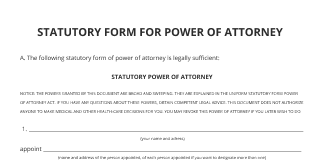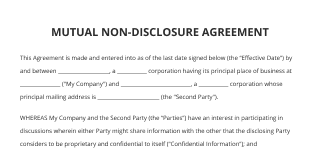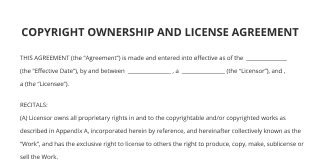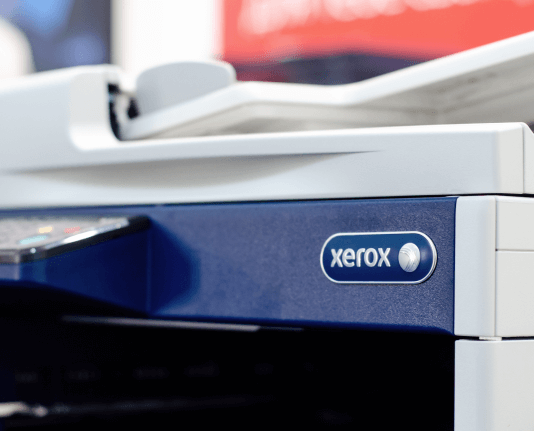Understanding the Difference between a Bill Vs Receipt
Move your business forward with the airSlate SignNow eSignature solution
Add your legally binding signature
Integrate via API
Send conditional documents
Share documents via an invite link
Save time with reusable templates
Improve team collaboration
See airSlate SignNow eSignatures in action
Understanding the Differences Between a Bill and a Receipt
A bill and a receipt serve distinct purposes in financial transactions. A bill is a request for payment, detailing the amount owed for goods or services rendered. It often includes information such as the date of service, the items purchased, and the total amount due. In contrast, a receipt is proof of payment, confirming that a transaction has been completed. It typically includes the date of payment, the amount paid, and a description of the items or services received.
When to Use a Bill
Bills are commonly used in various scenarios, such as:
- Utilities: Monthly charges for services like electricity, water, or gas.
- Medical Services: Fees for consultations, treatments, or procedures.
- Subscription Services: Charges for ongoing access to services or products.
In these cases, a bill outlines the amount due and provides a timeline for payment, ensuring that the recipient understands their financial obligations.
When to Use a Receipt
Receipts are essential for documenting completed transactions. They are typically issued in situations like:
- Retail Purchases: Proof of payment for items bought in-store or online.
- Services Rendered: Confirmation of payment for services, such as repairs or consultations.
- Expense Tracking: Receipts help individuals and businesses keep accurate records for budgeting and tax purposes.
Having a receipt is crucial for returns, exchanges, or warranty claims, as it verifies that the purchase occurred.
Legal Implications of Bills and Receipts
In the United States, both bills and receipts have legal significance. A bill can serve as a formal request for payment, and failure to pay may result in legal action. A receipt, on the other hand, acts as evidence of a transaction and can be used in disputes to prove payment. Understanding these implications helps individuals and businesses manage their financial records and responsibilities effectively.
How to Create and Manage Bills and Receipts Digitally
Using digital document solutions like airSlate SignNow can streamline the process of creating and managing bills and receipts. Users can:
- Prepare and send bills for payment, ensuring all necessary details are included.
- Create customized receipts that can be easily shared with customers or clients.
- Store and organize documents securely, making it easy to access records when needed.
This digital approach enhances efficiency and reduces the risk of errors in financial documentation.
Best Practices for Handling Bills and Receipts
To ensure effective management of bills and receipts, consider the following best practices:
- Keep all bills and receipts organized, either digitally or physically, to simplify tracking and retrieval.
- Regularly review bills for accuracy and ensure timely payments to avoid late fees.
- Store receipts in a manner that allows for easy access during tax season or for warranty claims.
Implementing these practices will help maintain clear financial records and support better budgeting decisions.
airSlate SignNow solutions for better efficiency
Our user reviews speak for themselves






Why choose airSlate SignNow
-
Free 7-day trial. Choose the plan you need and try it risk-free.
-
Honest pricing for full-featured plans. airSlate SignNow offers subscription plans with no overages or hidden fees at renewal.
-
Enterprise-grade security. airSlate SignNow helps you comply with global security standards.

Differentiating bill from receipt
In the realm of financial management, it is vital to differentiate between a bill and a receipt. A bill represents a demand for payment, while a receipt serves as evidence that payment has been accomplished. This guide will assist you in understanding the advantages of employing airSlate SignNow for your document signing requirements.
Procedure to leverage airSlate SignNow for managing bills and receipts
- Launch your web browser and go to the airSlate SignNow website.
- Establish a free trial account or sign in to your existing account.
- Choose the document you intend to sign or dispatch for signatures.
- If you anticipate reusing this document, save it as a template for upcoming use.
- Access your document to perform any necessary adjustments, such as adding fillable fields or including specific details.
- Authorize the document and incorporate signature fields for the intended recipients.
- Press 'Continue' to set up and send an eSignature invitation.
airSlate SignNow provides an effective solution for enterprises aiming to optimize their document signing workflow. With its intuitive interface and economical pricing, it presents outstanding value for your expenditure.
Discover the benefits of airSlate SignNow today and enhance your document management. Initiate your free trial now!
How it works
airSlate SignNow features that users love
Get legally-binding signatures now!
FAQs
-
What is the difference between a bill of supply and a receipt?
2. Time of Issue. A bill is issued before or when providing goods or services. It acts as a payment request, indicating the amount the buyer needs to pay for the goods or services received, whereas a receipt is issued after the payment has been made. -
What is the difference between an item receipt and a bill?
A sales receipt records goods or services paid for immediately at the time of purchase (sometimes referred to as a “point of sale” purchase). A bill is an invoice sent to you by a vendor for work items, goods, or services. A statement shows what a customer still owes you at a certain time. -
What is the difference between a bill and a receipt?
In short, an invoice is sent by the vendor, whereas a bill is received by the customer for the same purchase. Receipts: A receipt is a document that the vendor provides once they receive the payment from the buyer. -
What is a bill of supply?
A bill of supply is usually issued when a business sells goods and services that are classified as exempt from GST. For example, a fruit vendor would not be issuing a regular Tax Invoice on sale but raise a Bill of Supply for his customers. -
Is a bill of sale different than a receipt?
A bill of sale and a receipt are similar instruments, but a receipt is generally less formal than a bill of sale. A bill of sale, for example, must usually contain a description of the exchanged good(s). -
What is legally considered a receipt?
Receipt has two legal definitions: (1) A legal document evidencing a buyer has purchased and taken possession of the goods. A receipt can range from a small paper itemization of goods purchased in a retail setting to a document that a person storing an item has to prove another's ownership (i.e. a warehouse receipt). -
What's the difference between a bill of sale and a receipt?
A bill of sale and a receipt are similar instruments, but a receipt is generally less formal than a bill of sale. A bill of sale, for example, must usually contain a description of the exchanged good(s).
What active users are saying — bill vs receipt
Related searches to Understanding the difference between a bill vs receipt
Get more for bill vs receipt
- Enhance your business with client relationship management integration
- Discover the best IT support platform for your business
- Discover the application of Salesforce CRM for seamless document signing
- Enhance your client relationship management metric with airSlate SignNow
- Discover the best cloud-based help desk software for seamless document management
- Enhance your client relationship management site with airSlate SignNow
- Enhance your client relationship management summary with airSlate SignNow
- Discover why airSlate SignNow is the commonly used CRM software for your eSigning needs
Find out other bill vs receipt
- Improve Your Google Experience: how to sign something ...
- Improve Your Google Experience: how to sign something ...
- Try Seamless eSignatures: how to sign something in ...
- Try Seamless eSignatures: how to sign something in Word
- Find All You Need to Know: how to sign something on a ...
- Explore popular eSignature features: how to sign ...
- Explore popular eSignature features: how to sign things ...
- Try Seamless eSignatures: how to sign the Word document ...
- Improve Your Google Experience: how to sign your name ...
- Try Seamless eSignatures: how to sign your name in Word
- Find All You Need to Know: how to sign your name on a ...
- Explore popular eSignature features: how to type a ...
- Try Seamless eSignatures: how to type a signature in ...
- Start Your eSignature Journey: how to type an ...
- Enjoy Streamlined eSignature Workflows: how to update ...
- Enjoy Streamlined eSignature Workflows: how to update ...
- Enjoy Streamlined eSignature Workflows: how to update ...
- Improve Your Google Experience: how to upload a ...
- Explore popular eSignature features: how to upload an ...
- Try Seamless eSignatures: how to upload a signature to ...






























